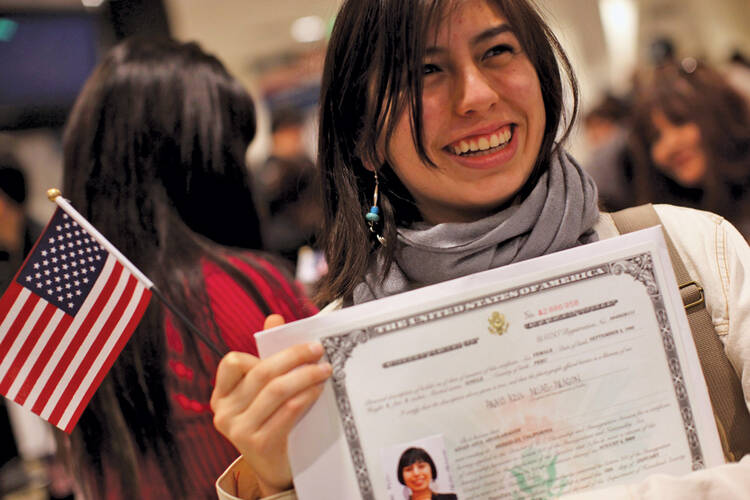For more than 20 years, efforts to pass a far-reaching reform of the U.S. immigration system, pushed at times by Democrats as well as Republicans, by Presidents George W. Bush and Bill Clinton, have gotten as far as a vote in one body of Congress before falling apart. The last time Congress passed a substantial immigration reform law, in 1986, the Rev. Nicholas DiMarzio, then the director of Migration and Refugee Services for the U.S. Catholic bishops, helped coalition-building among interest groups like the National Council of La Raza and the A.F.L.-C.I.O. “It was a whole different political scene,” said now-Bishop DiMarzio of Brooklyn, N.Y. “Bipartisanship was possible. I don’t know how it’s going to work this time.”
In the mid-1980s, undocumented immigrants numbered around five million people in perhaps 10 states, mostly along the Mexican border and in New York, Florida and Illinois. Today, more than 11 million people lack legal status, and the list of states with the fastest-growing populations of immigrants includes Tennessee, North Carolina, Arkansas, Delaware and Wyoming. The coalition-building it took to pass previous immigration legislation may offer lessons for today’s Congress as it launches an effort that may have the best chance of achieving comprehensive reforms since the era of the Iran-Contra affair and the initial public stock offering for Microsoft. Since more than 70 percent of Hispanic voters supported President Obama in the 2012 election over his rival, Mitt Romney, Republican leaders have moved swiftly to restart efforts to fix an immigration system that is widely described as broken.
On Jan. 28 a bipartisan panel of senators, quickly dubbed the Group of Eight, presented a framework that would include a path to citizenship for undocumented immigrants and would reduce backlogs in the immigration system that hinder family reunification. A day later, President Obama outlined a similar but more comprehensive list of his goals for immigration legislation.
The proposals of the president and the Senate panel have been cautiously praised by faith groups, civil rights organizations and employers. Archbishop José H. Gomez of Los Angeles, chairman of the U.S. Conference of Catholic Bishops’ Committee on Migration, welcomed the senators’ effort. “It is vital that the framework includes a path to citizenship, so that undocumented immigrants can come out of the shadows and into the light and have a chance to become Americans,” Archbishop Gomez said, noting the senators’ blueprint for reform “gives hope to millions.”
Archbishop Gomez noted some room for improvement. The proposal fails to restore to immigrants due process protections that were lost in the 1996 Illegal Immigration Reform and Immigrant Responsibility Act; and it does not address, he said, the root causes of migration, such as the absence of living-wage employment in the sending communities or protection for refugees fleeing persecution.
Nevertheless, Archbishop Gomez pledged the support of the U.S.C.C.B. for pushing sound immigration legislation forward and working with Congress to create an immigration system that respects basic human rights and dignity while also ensuring the integrity of U.S. borders. “A reformed system can protect human dignity and the homeland at the same time,” he concluded.








